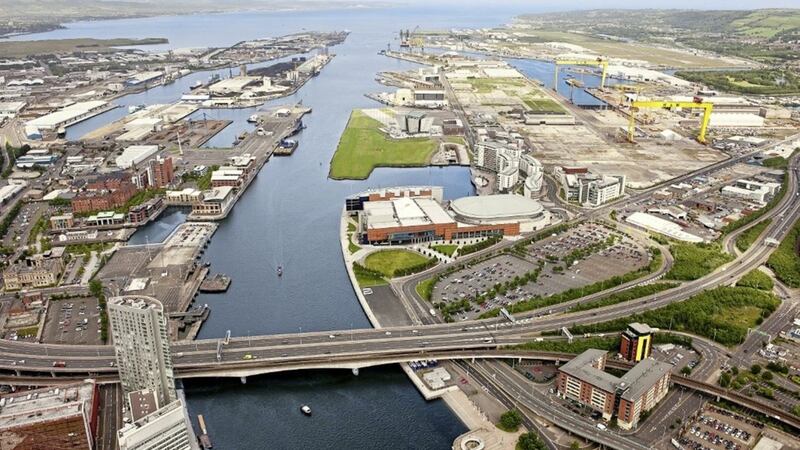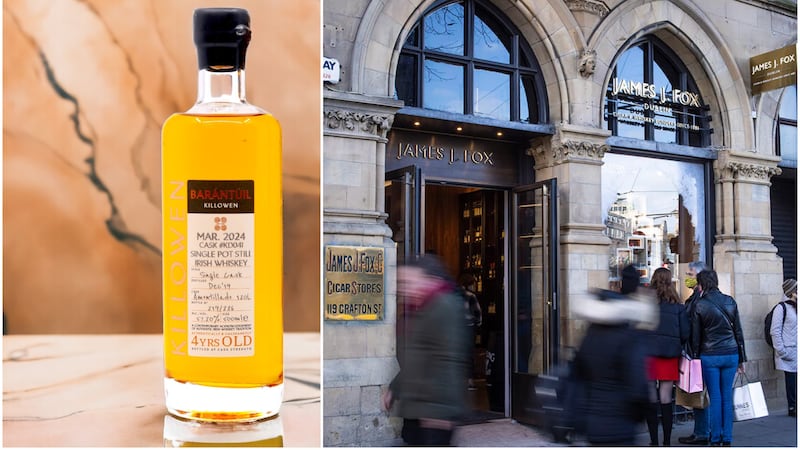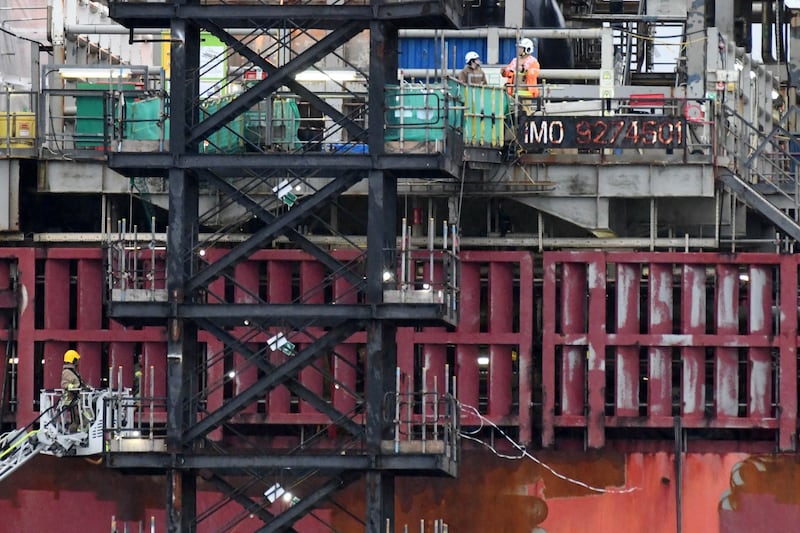BELFAST Harbour is keeping Northern Ireland eating, growing, building and economically afloat, with activities at the sprawling port continuing on the up, its latest annual report reveals.
Turnover grew by 7 per cent to £58.1 million in 2016 while operating profit soared by 12 per cent to £32.2m, all driven by improved port throughput (23 million tonnes) and increased property income.
And given its trust port status, that and more will be ploughed back into investment at the Harbour, with more than £100 million currently committed to future capital expenditure projects.
Virtually every aspect of the business reported an improvement last year, the report confirms.
The freight ferry sector (Stena is the provider) performed especially well with more than half a million vehicles passing through Belfast, a rise of 60 per cent since 2010. And passenger numbers grew by 9 per cent to 1.5 million, the highest level since 2004.
The Harbour invested £42m (up from £18m in the previous year) in infrastructure including new logistics warehousing, quayside cranes, the new Harbour Studios and ongoing urban regeneration schemes such as City Quays.
Harbour chair Dr David Dobbin said: “This has been another highly successful year, reflecting an improving economic background and the benefits coming from our ongoing investment in port facilities and development of the Harbour estate - investments which have totalled £130m over the past five years.
“Every penny of our net profit is reinvested in the development of the Harbour’s port and property activities, supporting businesses throughout Northern Ireland. As is the case in the Port sector the scale of these benefits to the wider economy is considerably in excess of the direct economic benefit to Belfast Harbour itself.”
Last year the Harbour invested £3m in 90,000 sq ft of additional warehousing and £4m in new cranes, including the largest single crane operating in any British or Irish port.
Significant investments were made in regeneration projects in the Harbour Estate. These included City Quays 2, a 124,000 sq ft grade A office which will accommodate 1,000 workers, an 188-bedroom Marriott Hotel and the 66,000 sq ft Belfast Harbour Studios.
Dr Dobbin added: “Belfast Harbour has an ambitious investment pipeline which will continue to drive our business and enhance the capacity of Northern Ireland’s economy, creating jobs and maintaining Belfast Harbour as the region’s most important access point to the global marketplace.
“Our investment profile has historically been dominated by marine projects, but the opportunity to utilise waterfront sites no longer required for port operations has generated major property development projects.
“Planned in consultation with Invest NI, City Quays has created strong interest among inward investors. The first office, City Quays 1, is fully let, with City Quays 2, due for completion this summer already generating significant interest. The board has also approved the development of City Quays 3, a 260,000 sq ft office which is expected to be completed by 2019.”
Almost 2.3m tonnes of agri-sector related trades were also handled through Belfast, performing better than expected as the impact of lower global milk prices did not fully materialise.
Cement exports exceeded 200,000 tonnes for the first time since 2007 and coal grew to 2.2m tonnes representing 20 per cent of all UK coal imports.
Belfast Harbour in numbers
- 3,000 acres of land and sea
- 70 per cent of all NI’s seaborne trade
- 23 million tonnes handled annually
- 1.5 million passengers annually
- 8km of quays / 30km of roads
- £400m invested in 20 years
- £120m investments committed
- 700 tenants employing 23,000
- 10m sq ft developed in 20 years








